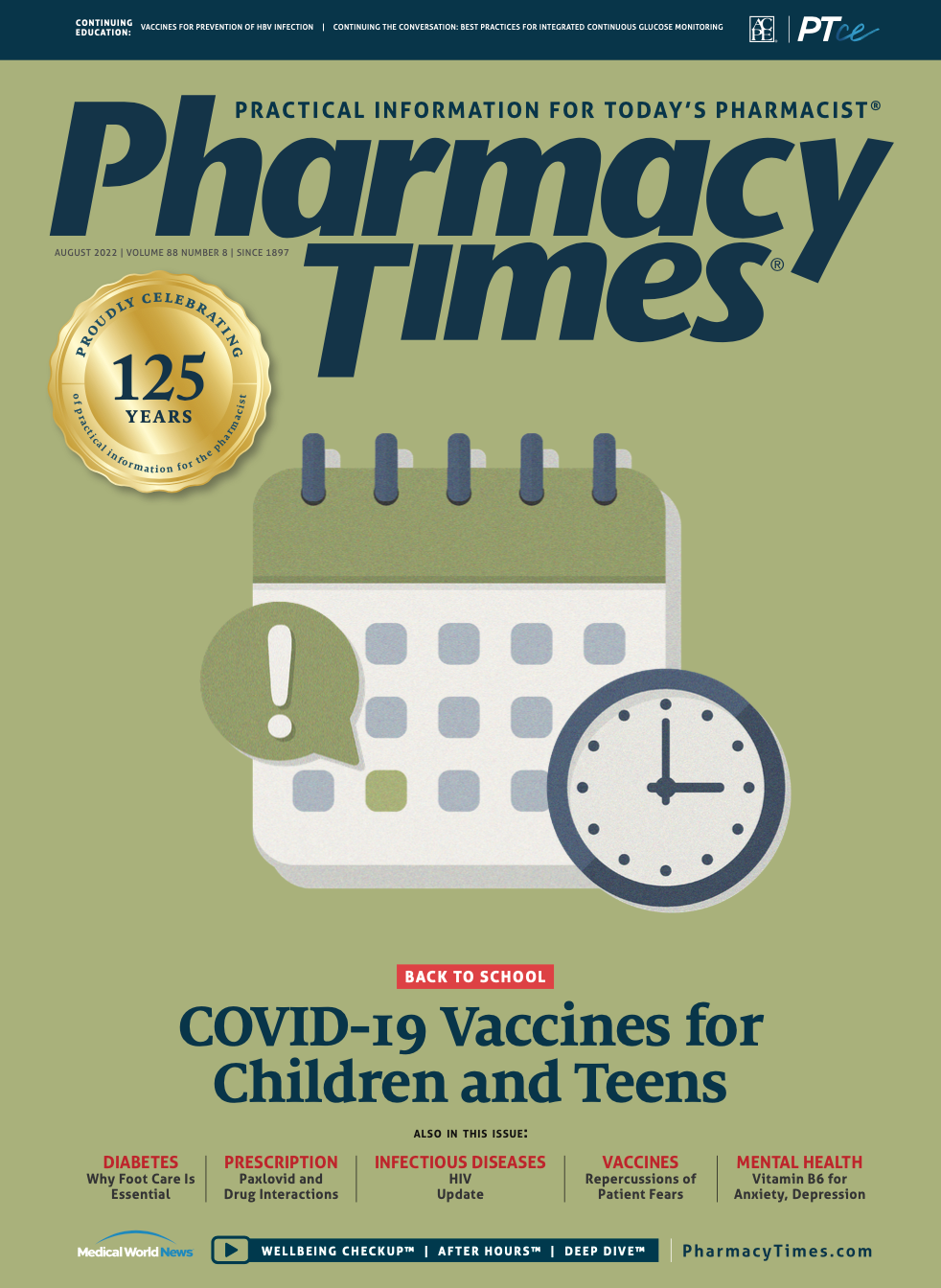Publication
Article
Pharmacy Times
OTC Case Studies: Vitamins and Supplements
How would you handle these patient questions?
CASE 1: Calcium
Q: FB is a woman aged 25 years who is looking for a daily multivitamin. She has been taking an OTC multivitamin for a year but is considering adding calcium to her regimen. FB’s mother told her she should take it to “build her bones.” FB wants to know how much she can take and whether there is anything else she can do for her bone health. She is healthy with no other medical conditions. What recommendations should the pharmacist offer?
A: Calcium supplements have been proven to be beneficial at helping prevent osteoporosis and for overall bone health. The recommended amount of calcium varies between 1000 and 1200 mg daily, depending on age. Women aged 19 to 50 years should take 1000 mg daily, and women 50 years and older should take 1200 mg daily. It is important to evaluate FB’s dietary intake of calcium. When making a dose recommendation of calcium, dietary products such as milk or yogurt should be subtracted. If FB is not receiving enough calcium supplementation through her diet, she can take 500 mg twice daily to get maximum benefits. Other things she can do to build strong bones include avoiding smoking and secondhand smoke, doing weight-bearing exercises, drinking alcohol in moderation (less than 1 drink per day for women and less than 2 drinks per day for men), and eating healthy food.1
CASE 2: Vitamin D
A: LF is a woman aged 22 years who is looking for OTC vitamin D. At her recent well visit, her physician recommended she take vitamin D because her levels are borderline low, saying it would also help her calcium absorption. LF has no medical conditions and is otherwise healthy. Because there are several formulations of vitamin D, she is confused about what dose to take. She takes a daily multivitamin and a calcium supplement twice daily. What recommendations should the pharmacist offer?
Q: Advise LF that in addition to building strong bones by helping calcium absorption, there are many other benefits to vitamin D. Vitamin D helps the immune system fight off bacteria and viruses and also helps with muscle and nerve functions.2 Most adults get vitamin D through diet and direct sunlight, yet many patients still suffer from lower levels. Vitamin D is fat soluble, which means LF could overdose if she takes too much. Symptoms of overdose include frequent urination, high blood sugar, nausea, vomiting, and weakness. Patients like LF, aged 19 to 70 years, should take 600 IU of vitamin D per day. Patients over 70 years should take 800 IU daily.3 Patients who suffer from vitamin D deficiency may need higher doses.
CASE 3: Zinc
A: RD is a man aged 48 years who is considering a zinc supplement to prevent COVID-19. He knows zinc is beneficial for the common cold and wonders whether taking it long term prevents COVID-19. RD has diabetes and hypertension but is otherwise healthy. What should the pharmacist recommend?
Q: Tell RD that several clinical trials have evaluated the use of zinc to prevent and treat COVID-19. The data are insufficient, and the benefits of zinc do not outweigh the risk. Long-term use of zinc can lead to copper deficiency, which can cause anemia, ataxia, myelopathy, paresthesia, and spasticity. As a result, RD should avoid using zinc for the prevention of COVID- 19.4 The best step RD can take is to get his COVID-19 vaccines and boosters, which are highly effective at preventing severe illness, hospitalization, and death. Avoiding crowds and poorly ventilated spaces, social distancing, and wearing a mask are also ways to avoid getting COVID-19.5
CASE 4: Vitamin C
Q: SM is a woman aged 42 years who is asking about vitamin C supplementation and says her friends use vitamin C topically. She takes a daily multivitamin but wants to add vitamin C to her daily regimen and asks whether it is beneficial for skin health. What recommendations should the pharmacist offer?
A: Although many individuals use vitamin C topically for their faces, many of the formulations also include vitamin E. Vitamin C has demonstrated protection from UV radiation, and it also assists with wound healing and minimizes scar formation. Long-term studies on skin changes, such as wrinkles, are more difficult to assess. Because vitamin C is water soluble and she is using it topically, it would not hurt to try it. Another thing SM can do for skin health is to eat a well-balanced diet with plenty of fruits and vegetables.6
About The Author
Rupal Mansukhani, PharmD, FAPhA, CTTS, is a clinical associate professor at Ernest Mario School of Pharmacy at Rutgers, The State University of New Jersey in Piscataway, and a transitions-of-care clinical pharmacist at Morristown Medical Center in New Jersey.
Ammie Patel, PharmD, BCACP, is a clinical assistant professor of pharmacy practice and administration at Ernest Mario School of Pharmacy at Rutgers, The State University of New Jersey in Piscataway, and an ambulatory care specialist at RWJBarnabas Health Primary Care in Shrewsbury and Eatontown, New Jersey.
References
1. Osteoporosis overview. National Institute of Arthritis and Musculoskeletal and Skin Diseases. Updated October 2019. Accessed July 4, 2022. https://www.bones.nih.gov/health-info/bone/osteoporosis/overview
2. Micronutrient facts. CDC. Updated February 1, 2022. Accessed July 4, 2022. https://www.cdc.gov/nutrition/micronutrient-malnutrition/micronutrients/index.html
3. Vitamin D. National Institutes of Health Office of Dietary Supplements. Updated June 2, 2022. Accessed July 4, 2022. https://ods.od.nih.gov/factsheets/VitaminD-HealthProfessional/[RP3]
4. Zinc. National Institutes of Health. Updated April 21, 2021. Accessed July 4, 2022. https://www.covid19treatmentguidelines.nih.gov/therapies/supplements/zinc/
5. How to protect yourself and others. CDC. Updated February 25, 2022. Accessed July 4, 2022. https://www.cdc.gov/coronavirus/2019-ncov/prevent-getting-sick/prevention.html
6. Pullar JM, Carr AC, Vissers MCM. roles of vitamin C in skin health. Nutrients. 2017;9(8):866. doi:10.3390/nu9080866

Newsletter
Stay informed on drug updates, treatment guidelines, and pharmacy practice trends—subscribe to Pharmacy Times for weekly clinical insights.





